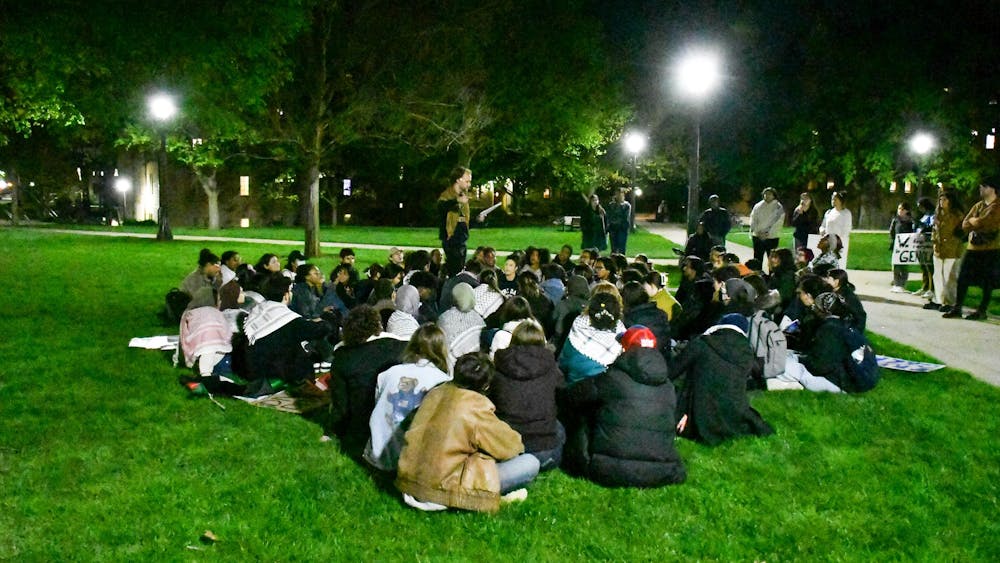On Sunday morning, a number of students gathered in Stanford Hall to protest hatred on campus. As one of those students, I hoped to stand in solidarity with the victims of racist and queerphobic targeted violent speech. I was proud of the protest organizers, who acknowledged the role that parietals play in perpetuating sexism and queerphobia at Notre Dame. And as I sat on the floor of Stanford Hall, I couldn’t help but notice a disheartening power dynamic: While the protestors –– predominantly womxn of color and queer students –– sat silently, many Stanford Hall residents slammed their doors and walked through the hallway wearing nothing but boxers. The intentions of these men seemed clear enough to me: Through aggressive expositions of masculinity, Stanford residents hoped to intimidate their peers.As time passed, NDPD took increasingly adverse action to break up the protest. While the officers seemed to be sympathetic during my brief stay at the protest, they were required to punish students for violating parietals. As The Observer reported, “At 4:15 a.m., [officers warned that] the University administration was prepared to invoke emergency procedures and protestors would be summarily expelled if they did not leave, citing security risks.” If you think such a citation is ridiculous, then you are in good company. We find ourselves in a situation in which students risk expulsion — an absurd and disproportionate punishment — simply for protesting an already absurd policy. See, the implication of NDPD’s involvement and their citation is that a silent, peaceful protest composed primarily of marginalized people is dangerous. We must ask: What danger did the peaceful protesters pose? The only thing that was threatened by the protest was a white, cis-heternormative hegemony. Parietals are the University’s primary means of protecting this hegemony.As a cisgender queer student, I am essentially unburdened by parietals. I am free to walk into my dorm with my significant other at any hour of the day. I am free to enter and stay in his dorm as well. My status as a white cis-male means that parietals unjustly empower me even further; officers and University staff are more likely to let me move throughout “male” spaces unquestioned. I am not the first student to speak out against parietals. Notre Dame students (primarily womxn) have been doing so for decades. One need only search “parietals” on The Observer’s website to see powerful testimony about the dangers of the practice. Experts explain that these “kind of environments are more likely to lead to increased rates of sexual assault.” Neither am I the first student to use the language of criminality to describe our University’s approach to gender relations. We already know what parietals are: an institutional attack against womxn, gender non-conforming students and the poor. For gender non-conforming students, parietals mean exclusion from safer spaces after certain hours. Furthermore, wealthy students may avoid parietals altogether. I have heard men brag about “taking girls to their off-campus apartment” — a luxury that only the very rich have. For those of us who do not have multiple places of residence in South Bend, parietals are unavoidable.Notre Dame’s choice to institutionalize sexism, trans-exclusion, queerphobia and classism through parietals is nothing short of reprehensible. The longer this issue is drawn out, the longer Notre Dame positions itself as a proponent of a white, cis-heteronormative hegemony. We are approaching a watershed moment in Notre Dame’s history: We may choose to abolish parietals and take a tangible step towards disarming sexual assaulters, misogynists, queerphobes and trans-exclusionists, or we may remain complacent in our exclusion. The choice seems clear to me.
David Phillips
junior
Nov. 17













